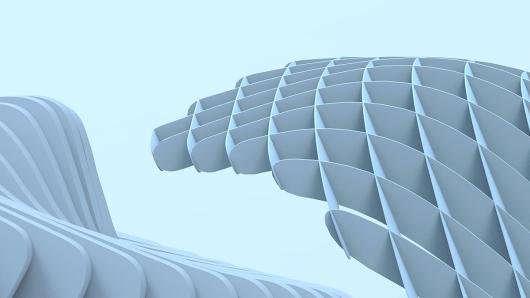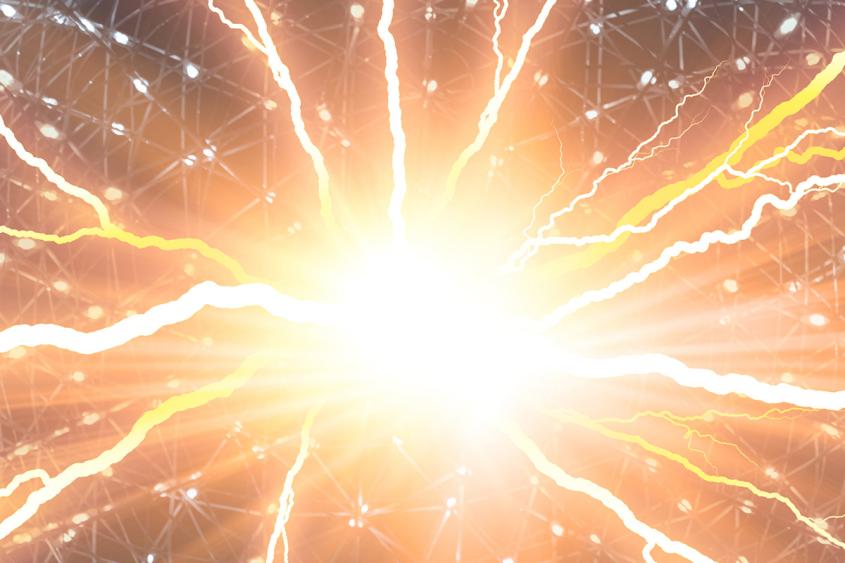Once again, we have allocated resources to the national e-infrastructure services for the coming period, which starts on 1 October and lasts until 1 April 2023.
Our Resource Allocation Committee has assessed a considerable amount of research projects, and we are pleased to welcome many new and old users to the national supercomputers and storage facilities.

Constant development in technology and digital working methods means that more and more scientific disciplines need high-performance computing and storage services to carry out research. With nearly 600 projects and 2000 users on the national systems, we are proud to contribute to ground-breaking scientific results and knowledge that benefits society.
Highly topical research project in Macroeconomics
This summer, several European countries have experienced extreme heat, followed by disastrous fires and droughts that now threaten agriculture and crops. Some countries that have finally shut down their coal facilities to aim for the goals of The Paris Agreement have fired up again as skyrocketing energy prices shake the livelihood of businesses, industries, and people. The energy crisis, a side effect of Russia´s devastating war on Ukraine, now threatens to throw thousands of Europeans into poverty during the upcoming winter.
Our part of Europe has largely been spared trials like these during the last decades. Except for disconcerting evidence that climate change is upon us and progressing more rapidly than even our climate researchers have anticipated, the challenges are not new. For centuries, war, political instability, and failed harvests have driven people from their homes, hoping to find a better life elsewhere. Immigration is one of the essential political questions that must be addressed by our society.
We are thus pleased to see that a project within Macroeconomics is granted resources on the National research infrastructure services. The project is called IMWEL, short for Welfare state immigration inequality and Immigration, Inequality and the Welfare State: A Modern Macroeconomic Approach.

The IMWEL project: How does immigration impact the host economy?
Associate professor Hans Åsnes Holter at the University of Oslo (UiO) is responsible for the IMWEL project. The researchers will investigate the economic mechanisms through which immigration impacts the host economy, and how the institutions of the host economy affect the experience of immigrants. The project aims to help clarify misconceptions about the impacts of immigration and contribute to evidence-based policy design. To achieve this the researchers will measure the impact of the current immigration dynamics on labour markets, such as unemployment and labour force participation, and how this impact depends on institutional features and public policy. Institutional and individual-specific factors that determine the speed of economic integration of immigrants and how this affects the economic sustainability of a migration shock will be quantified. The same for the impact of immigration on wealth and income inequality and the interaction with institutional features.
The researchers will also measure the optimal way to allocate an immigration shock across European countries and optimal policy responses for individual countries. The results can contribute to evidence-based policy design and implementation to maximize the opportunities immigration presents and minimize displacement effects. The issues are highly topical, and we look forward to learning more about the findings.
The study of these issues will involve numerical solutions and the simulation of large general equilibrium models, which is computationally intensive. Programs are run in parallel, making supercomputer Betzy perfect for this research.
Source: Immigration, Inequality and the Welfare State (Prosjektbanken - Forskningsrådet) and the project application.
The size of computing projects in terms of consumed CPU hours keeps increasing every year and thus underlining the importance of equipping researchers with national services of high quality. Like previous periods, Earth Sciences and Physics are by far the largest consumers of computer time on the national HPC services.

Biggest HPC projects in terms of CPU hours
The 10 projects below will get a total of nearly 443 million CPU hours:
- Mats Carlsson: Solar Atmospheric Modelling
- Andrea Gruber: Combustion of hydrogen blends in gas turbines at reheat conditions
- Noel Keenlyside: Bjerknes Climate Prediction Unit
- Luca Brandt: Heat and Mass Transfer in Turbulent Suspensions
- Trygve Helgaker: Quantum chemical studies of molecular properties and energetics of large and complex systems
- Pricilla Mooney: Polar Regions in the Earth System
- Quoc-Anh Tran: SUBSLIDE
- Nathalie Reuter: Mapping peripheral protein-membrane interactions for a better description of the protein-lipid interactome
- Zhiliang Zhang: Mechanical properties of nano-scale polymer particles by large-scale molecular dynamics
- Razvan Caracas: Extreme planetary interiors
Enhanced value for researchers with the next generation NIRD
Norway as a research nation is dependent on processing and storing scientific data in a secure way and future-oriented storage services. We hope to enhance value for our researchers when we open the new generation NIRD storage infrastructure during the coming period. With a capacity of 32 petabytes, with future expansion up to 70 PB if needed, we are much better equipped to manage our researchers’ growing needs not only for storage, but also to provide access to new and future-oriented services for all scientific disciplines that require resources for secure storage, processing and publication of research data.
However, as the next period commences, our researchers first get quotas on old NIRD, which later will be migrated when the new NIRD system is up and running in December. Our largest users of the national storage services in terms of storage quota are the data-driven fields of Climate and Earth Science.

Bigges NIRD projects by storage quota
The 10 projects below will get a total almost 8000 TB of storage:
- Mats Bentsen: Storage for nationally coordinated NorESM experiments
- Noel Keenlyside: Bjerknes Climate Prediction Unit
- Magnus Drivdal: High latitude coastal circulation modeling
- Mats Bentsen: Storage for INES - Infrastructure for Norwegian Earth System modelling
- Noel Keenlyside: Synchronisation to enhance reliability of climate prediction
- Hilde Fagerli: European Monitoring and Evaluation Programme
- Jon Albretsen: IMR-Internal-Storage
- Massimo Cassiani: Atmospheric Transport - Storage
- Kirstin Krüger: Transport and Chemistry of Climate and Ozone relevant trace gases
- Michael Schulz: Key Earth System Processes to understand Arctic Climate Warming and Northern Latitude Hydrological Cycle Changes (KeyCLIM)
Biggest TSD (Sensitive Data Services) projects
The 3 TSD projects below will get a total of 2,2 million CPU hours:
- Ole Andreassen: NORMENT infrastructure for sensitive data in severe mental disorders
- Ole Andreassen: NORMENT-MOBA infrastructure for sensitive data
- Inge Amlien: Lifespan changes in brain and cognition
The 3 TSD projects below will receive a total of 439 TB in storage:
- Rolf Skotheim: Computational analysis of human cancers for biomarker identification
- Anette Wolff: Genetics and transcriptomics in autoimmune Addison´s disease
- Ted Reichborn-Kjennerud: Understanding development of mental health problems in the population utilizing large-scale health data and novel molecular genetic methods
Digital humanities on the national services
Many of the projects being granted resources on the national research infrastructure services go straight to the core of the societal and global challenges we must solve in the coming year.
The Resource Allocation Committee is also accepting another project this autumn in a research area that we, as yet, have not often seen on the national e-infrastructure. Have you ever wonder what would happen if you could see music? Would you appreciate it more and experience music as more engaging?
The researchers in the MIRAGE project: A comprehensive AI-based system for advanced music analysis aim to find out.

The MIRAGE project: What if you could see music?
We are excited to find out as we welcome this digital humanities project aboard the national supercomputer Saga. MIRAGE will develop a ground-breaking AI system for music analysis and develop a modular transcription system.
Olivier Lartillot and fellow researchers Lars Monstad and Andres Elowsson at UiO will use machine learning to develop computers' ability to listen to and understand music. This will offer new ways to gain deeper insight into the language of music based on cutting-edge technology that will help human listeners better understand and appreciate music. An important application of the technology will be to make music more accessible and engaging, and the technology can also be used in music cognition and therapy.
The research carried out at this time is based on Norwegian Harding fiddle music. Computer-supported analysis tools extract large amounts of information about musical elements from the music such as timbre, pitch, rhythm, tonality and form.
From the project application: We will try to get a better understanding of music using intermediate measures and relevant parameter sharing and merging strategies in our machine learning architectures. Current methodologies that rely on image processing convolutional neural networks fail to account for the invariances specific to music audio.
The modular system will rely on powerful machine learning methods, carefully designed to account for the intrinsic organization of music, combined with analysis and modelling related to musicology and music cognition.
Source: MIRAGE: A comprehensive AI-Based System for Advanced Music Analysis (Prosjektbanken - Forskningsrådet) and the project application.
Digital Humanities is an under-developed, but steadily growing, field of science in Norway. We are expecting to welcome more researchers within this field in the coming years.
Until then, we wish all researchers good luck with their activities on the national e-infrastructure and look forward to gaining scientific results and new knowledge.